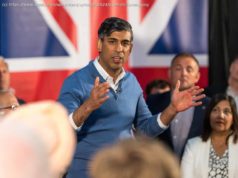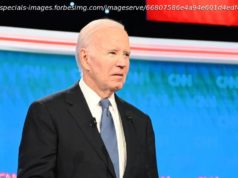Truth be told, the coming semi-death of Chief Wahoo isn’t a victory. It’s merely a cosmetic shift that hides the retrograde truth of what too many of those in charge of professional sports genuinely believe — amply demonstrated by their support of candidates who are for anything but civil rights and inclusion, writes Jeff Pearlman.
And yet, the more I thought about it, the more I came to believe that the Indian and the Redskin should stay. No, scratch that. Need to stay. They need to stay — as a reminder — until the hypocrisy, the emptiness and cynicism that underlie the decision to change the ugly logo are actually banished. Dropping the mascot? Though the move is understandably heralded by native Americans, it is a distraction from something larger.
If we have learned anything over the past year or so, it’s that while symbolism shines brightly, it’s the meat and potatoes behind the symbolism that truly carries weight. So while Dolan, the multi-millionaire controlling owner of the Indians, can play the hero and wave to the crowd as he takes a faux-stand in the name of inclusiveness, behind the scenes he and his family have regularly donated to conservative political figures, like John Kasich, who, until it was protected by law, spent his career opposing marriage equality and same-sex adoption.
Or, to put his sudden, dubious interest in diversity a different way: Where has Paul Dolan’s voice been when it comes to actual stands? See, it’s easy to remove an antiquated patch from a uniform; easy to take a red-faced symbol of bigotry off a hat. But what are you actually doing to make a difference? Where is your voice when it comes to say, civil rights or the #metoo movement? (Answer: Nowhere).
Hell, why will your team still be selling Chief Wahoo T-shirts and assorted garb at stadium souvenir shops? And why will it take till 2019 for the team’s uniforms, and banners and signs in Progressive Field to lose the logo? Is this even a real gesture of compassion? Or simply a look-at-how-good-we-are play?
That’s the heartbreaking thing about the unseen mechanisms of professional sports: make no mistake, they are entirely about PR, not substance. On the surface, we’re presented with shiny helmets and cheering crowds and clubhouse families. It’s about identically outfitted men and women coming together to accomplish a common cause. To win with heart and passion and cohesiveness.
Meanwhile, behind the scenes and burrowed within the penthouse offices, greed reigns. For example, inside the vast majority of clubhouses and locker rooms, you’ll find significant numbers of athletes who rose from low-income and impoverished neighborhoods that relied on tax dollars to fund essential after-school and daycare programs.
With rare exceptions, though, team owners throw in with candidates who fight to slash said taxes in order to turn their millions and billions into even greater millions and billions. Patriots owner Robert Kraft, for example, has apparently raved approvingly to Trump over the President’s tax cut, which will bring increased happiness to Kraft’s corporate interests (in addition to his sports holdings, he manufactures paper). Woody Johnson, the Jets owner, raised money for Trump and donated $1 million to his inaugural committee. The list is long — big-time sports kingpins fighting for the men and women who will make them even wealthier.
Hell, at least Washington Redskins owner Daniel Snyder — a staunch supporter of his team’s name and mascot — has repeatedly shown us exactly who he is. He swats aside arguments to change the Redskins logo with callous disdain, and even donated $1 million to Donald Trump’s inaugural festivities. In other words, he is a self-absorbed jerk who refuses to hide it — and I’m oddly comfortable with that.
Truth be told, the coming semi-death of Chief Wahoo isn’t a victory. It’s merely a cosmetic shift that hides the retrograde truth of what too many of those in charge of professional sports genuinely believe.
I say we keep the imagery of the offensive Indian both alive and front and center.
It’s a reminder that, in the shadow of sports, beliefs rarely match ideals.
It’s a reminder that we have a long way to go.






